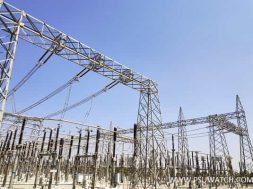
In Short : Adopting renewable energy can reduce India’s heavy industry emissions by 17% by 2030. This shift to cleaner energy sources is crucial for lowering greenhouse gas emissions and supporting the nation’s climate action and sustainability goals.
In Detail : Greening electricity use can reduce the 2030 emissions from India’s heavy industries by 17%, says report
Renewables-based electrification can play a crucial role in avoiding 17% of the anticipated carbon emissions from India’s heavy industry by 2030, according to a new report from the energy think tank Ember.
This report indicates possible near and long-term strategies to smash emissions as India negotiates with the EU bloc on mechanisms to comply with the Carbon Border Adjustment Mechanism (CBAM). CBAM is a regulatory framework that imposes a carbon tariff on imports to the EU.
To fully decarbonise its electricity use and remain competitive in the global market, India’s heavy industries require 120 GW of dedicated renewable energy capacity by 2030.
The report focuses on the steel, cement, petrochemicals, aluminum, and ammonia sectors. Decarbonising these emission-intensive “heavy” industries can significantly benefit both India’s industrial sector and renewable energy ecosystem.
Currently, 11% of energy consumption in these heavy industries comes from electricity, with the rest from fossil fuel-based thermal energy.
Based on industry growth projections, electricity demand for heavy industries is expected to rise by 45%.
Meeting this increased demand with renewable energy could help to avoid 180 million tons (Mt) of CO2, equivalent to the total annual emission of the Netherlands.
Duttatreya Das, an independent consultant and the report’s lead author said: ”Besides being one of the most promising levers for decarbonising industries, renewable-based electrification offers multiple co-benefits.”
“It allows industries to benefit from low-cost renewable power, improves grid flexibility, and most importantly, improves air quality within industrial facilities. Switching to renewables immediately and ensuring clean air within industrial premises needs to be a people-first strategy for heavy industries,” says Das.
For the deep decarbonisation of industries in the long run, the report finds that it is crucial that key technologies to electrify thermal processes become commercially viable. If these new technologies and the government’s green hydrogen mission succeed, the share of electricity in the industrial energy mix could triple by 2050, reaching approximately 700 GW and avoiding 737Mt of emissions.
However, advancing these technologies to achieve commercial viability and widespread deployment remains a challenge, adds the report.
Aditya Lolla, Asia Programme Director at Ember, said: “With emissions-related trade regulations like CBAM are expected to take effect soon, understanding the potential for near-term emission reductions is crucial for Indian heavy industries. Renewables-based electrification also offers multiple co-benefits to India’s wider energy ecosystem. It can open up multi-million dollar private investment opportunities, stimulate India’s clean energy manufacturing sector, and propel India towards becoming a global leader in clean energy.”











